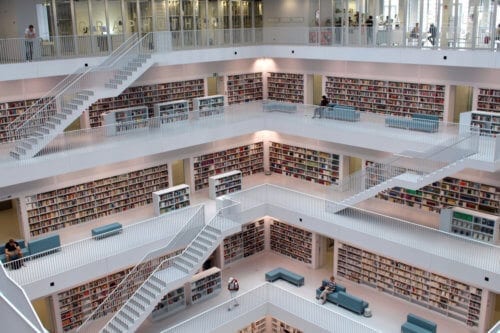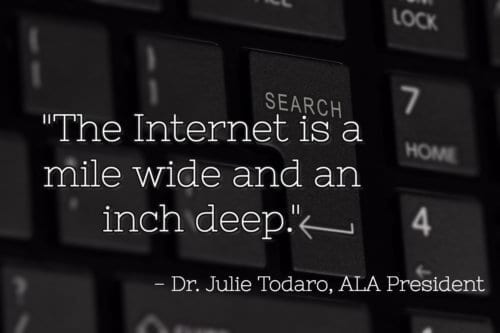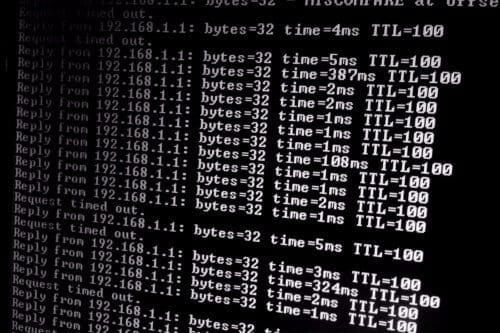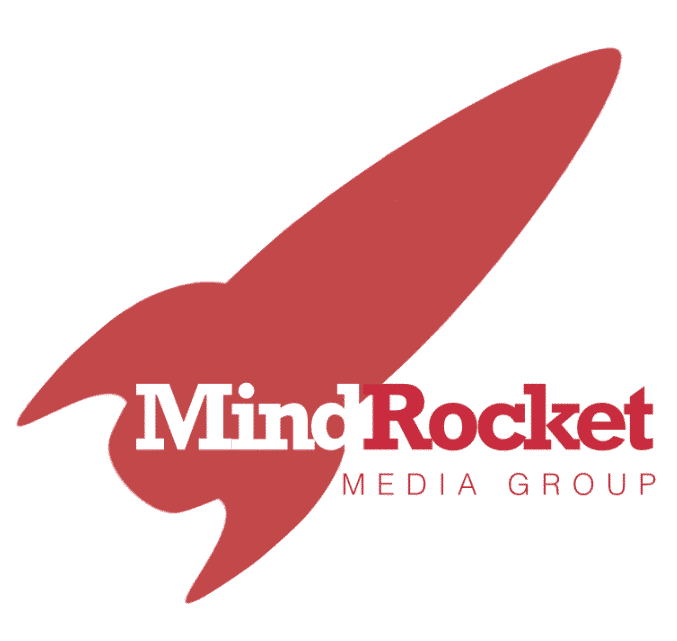Julie Todaro, President of the American Library Association, ALA and Eleni Miltsakaki, founder and CEO of Choosito! talks about the role of librarians in today’s schools. Contrary to the widely held notion that the role of the librarian is shrinking, both Todaro and Miltsakaki make strong arguments for the increased importance of librarians as overseers of an endless stream of Internet data. Todaro and Miltsakaki agree that students, more than ever, need the guidance of librarians in their educational lives.
Host: Well, Julie, I want to talk with you about the concept that we live in a world where students of all ages have the notion, “I can do it on my own.” Independence. I even see it in my home with my three-year-old son who always tells me, “Dad, I can do it on my own. I want to do it on my own.”
The Internet and technology, with regards to libraries, is fascinating to me with that idea of “independence” at the foundation or the premise. I’m wondering about your thoughts on how you look at it or how the American Library Association looks at it. How do we provide support for librarians in a space in a world where students now have the power through technology to do so much on their own? When I was growing up, the library was one of the main resources. I saw the librarian as a resource and help. I know that they still are. I am curious as to how you look at that and how you provide support not only for the librarians but also for the students in that type of exchange.
Julie Todaro: That’s a good question. For many years, we’ve heard people say things like what you said, “They can do it on their own.” Or similar statements, such as, “Everything on the Internet is for free, and it’s there.” One of the statements that I made very early on was, “The Internet is a mile wide and an inch deep.” There are, as we all know, billions of sources, and I would carry out your question a little further and say not just children do it on their own, but we also expect adults to do things on their own, as well.
The reality is that there should be an ever-continuing exchange of discussion and interaction, not only between software, if we can say it in that way, but also with adults, teachers, and librarians, to assist people in an ongoing way and help navigate. It’s not only finding the right tool to use, which they’re not probably going to do on their own, but it’s also finding out how that tool best works in an environment, and then the language that goes into that tool. Once they find the content, they can make decisions between and among the resources.
Those are the four elements that schoolteachers, librarians, and academics deal with all the time, and they’re never-ending. Yes, we can teach people tools, which cut our work down by about 25% – although I will tell you, tools are constant, and they’re constantly being refined. So we can absolutely teach people how to make choices among tools, and we can teach people in general the kinds of languages that are behind some of the tools and then teach them skills to go with that. But sharing with them ways to choose from among things that will reduce or narrow that pipeline of discovery is an ongoing process. We are constantly looking for resources that allow us to do that and our roles and responsibilities in that.
 Host: Eleni, I would turn to you then in a similar vein, but with a slightly different path. When you’re looking at technologies with your background, and you think about how to incorporate them in a way that can support the notion Julie’s talking about, not just students and children wanting to do things on their own, but to develop it so they can also feel that they’re in control. To feel as sense of control even when the conditions have been set up technologically so that they can experience the library as something that is free flowing, independent from the learner’s perspective and the educator’s perspective.
Host: Eleni, I would turn to you then in a similar vein, but with a slightly different path. When you’re looking at technologies with your background, and you think about how to incorporate them in a way that can support the notion Julie’s talking about, not just students and children wanting to do things on their own, but to develop it so they can also feel that they’re in control. To feel as sense of control even when the conditions have been set up technologically so that they can experience the library as something that is free flowing, independent from the learner’s perspective and the educator’s perspective.
Eleni Miltsakaki: Yes, this is speaking to my heart. I have spent many, many years at the Graduate School of Education, interacting and teaching teachers or teacher-students. I have spent quite a bit of time at schools with teachers and librarians. What I am finding and it could be a little bit extreme, but I want to share it with you and see how it will apply.
I find that the biggest challenge that comes with the new age of information and the new shape that information has taken is how to change how we look at information. It seems almost hardwired in our brains that you see the printed word and you rush to read it without qualifying that printed word at all. And this comes, of course, from many years where we were dealing with information that came in books, where editors had done something about that information, and librarians in schools picked the right book and gave it to us. Now we have this amazing resource that has a very different DNA.
The web is a very different kind of resource. There are a lot of advantages and some; I don’t want to call them disadvantages, but some “new needs” that these resources have created. There is a lot of information, and there is a lot of user-generated information. There is some reliable information and some not-so-reliable information. There is information that’s good for one purpose and then others for other purposes.
I think the librarians are critical in this new information age in helping students and adults. I agree with Julie 100%; this is not just for the students, it’s also for adults because we are learning from these resources and helping them understand how this information is different from what they were used to. We are giving them the tools and the training that is needed to change the way they view the information.
The curation part has always been a critical part of what the library is offering. The curation needs the same skill that librarians have been using to be able to help us with the right kind of information, the good quality information. These same skills need to be transferred to each of us. The resource is too big. We cannot manually curate, 1 trillion different resources, and there are 100 million resources added every day. Either we will have to say, “Okay, we’re going to ignore the new resources.” Or try to figure out a way of, “Who’s going to process 100 million new resources every day and try to classify them?”
We need to have our favorite shelves, right? Where do I go? What are my basic resources for this topic on science, or another topic? What are the scalable skills? I believe it is critically the role of the librarians to train students with the skill to say, “Okay, let’s look at what makes the information good information.” Sometimes, it will be who’s behind the information and is it a reliable resource or not? Sometimes, it will be, “Okay, here is a particular user; how do you know if the way that this user is writing, the way that he’s putting this information together is actually something you want to take seriously or not?”
You will have to deal with these areas, and nobody can teach or train students with these skills other than the librarians because they are best positioned due to their skill set. They have been trained to do just that. They’re best positioned.
I don’t know how you feel, Julie, but I feel by changing the attitude of students, they understand that there are different types of content and that you have to go deeper by not only saying, “Okay, here is a good resource, here is Britannica. That’s a good resource,” but, “Here is this particular individual. Check him out. How is he writing? Is he citing when he’s analyzing a topic? How is he analyzing?” These skills gradually need to become our skills for every student.
 Julie Todaro: Absolutely. Let me make a couple of comments: You added in the layer of what we deal with all the time. It is not only the number of items that are added each day, and I’ll say items rather than resources, but the incredible number of content or pieces of content that people are putting out there; we have no clue as to their credibility. I don’t know if I told Rod this little anecdote the first time, but I can remember doing a reference interview with someone, and their assignment was secondhand smoke and the effects of secondhand smoke.
Julie Todaro: Absolutely. Let me make a couple of comments: You added in the layer of what we deal with all the time. It is not only the number of items that are added each day, and I’ll say items rather than resources, but the incredible number of content or pieces of content that people are putting out there; we have no clue as to their credibility. I don’t know if I told Rod this little anecdote the first time, but I can remember doing a reference interview with someone, and their assignment was secondhand smoke and the effects of secondhand smoke.
I was helping a student, and the student said, “You don’t need to help me. I have America Online.” It was a fine resource, but when he pulled his content up, he said, “This is all I need.” And I said, “Let’s take a look at this resource.” And when we looked at it, the URL or the address of the resource was .ca. And I said, “Son, that’s Canada. It’s not the United States.” So then he pulled up the next one, and he said, “Well, this is perfect.” And I said, “Well, let’s look at it. This is a commercial website so let’s see what the effects of secondhand smoke are?” It was a cigarette company.
Eleni Miltsakaki: Mm-hmm.
Julie Todaro: I said, “Let’s take a look at this and see what it is.” So we went down this list, and that’s the expertise that librarians deal with every day, some of which we can transfer to people to use to apply to everything. But the second thing I would add is not only what Eleni said but multiply that by the number of disciplines. The mathematics students have a set of basic critical skills, and then on top of there is the appreciation for not only classic sources but also contemporary assignments.
If you look at geography, you realize that classic sources have to be used alongside contemporary sources because you can’t have something that talks about Russia and the USSR, as countries morph and change. There are libraries or teachers teaching from old textbooks. For instance, a librarian could be using an old resource and has an encyclopedia set that still doesn’t have the United Arab Emirates in it or no “ikistans.” We have tons of wonderful countries that have been put together that are new since our encyclopedias were printed.
So going back to her first comment, the printed word has always been revered, and when you put that on the screen, there’s that continued reverence. But what we have to do is educate people that there are so many changes that happened to that printed word when it’s put on the screen where the accessibility and availability are so great. We’ve had to apply unique skills to that content.
Eleni Miltsakaki: Absolutely.
Host: Julie, when you look at your membership to that point, I’m curious as to what request they have for their professional development, or the needs that they have in maintaining that knowledge – at least the base of it. We’re talking about an inordinate amount of resources and items; I’m just curious as to how they communicate that to the ALA and what they are looking for and how they can stay abreast. The daunting part of it is as you have both suggested in theory is, “If you let a day go by, that’s just that many more resources and items that are being uploaded to the Internet.” We may or may not know what they do or what purpose they serve, or even where it’s originating as you suggested with the student and the tobacco research example.
I’m curious from the membership standpoint and when you’re talking with the librarians, what are they looking for when it comes to building knowledge, maintaining it, and then also being a part of the process?
Julie Todaro: Mm-hmm. The American Library Association is committed to a number of things, but certainly, professional development is an area that the associations excel. Members are constantly queried as to what kind of content they want and need. The American Association of School Librarians and the Association of College and Research Librarians have the request for information literacy and education at the top of their list. In addition to that, we have an ongoing request for content that assists us in identifying scholarly resources, what is the scholarship in resources. The education piece, as Eleni mentioned, helps you take a look at part of what’s delivered in a different way because someone else identifies it as scholarly, that’s a step forward.
But in addition to that, we have an extreme “hot topic” and it’s OERs or Open Educational Resources.
Eleni Miltsakaki: Mm-hmm.
Julie Todaro: They are resources that are created by and vetted by very expert people, some of which are free, some of which charge for the platform they’re delivered on and in my impression, we have many different kinds of resources. The two we deal with in my higher ed environment is textbooks that are OERs and we have 28 different resources in the country and internationally that are Open Educational Resource delivery, jumping off points, or as we call it, “a diving board.”
We have OERs that are being created by companies who also sell content but they’re aware that some content needs a collaborative focus and some content may need to be free. “Open need,” means a number of different things. So librarians are looking at information literacy and Open Educational Resources, scholarly communications. And I don’t want to leave out, special librarians who look at proprietary information and how we can blend OERs with proprietary. And certainly, public librarians and one of the biggest aspects now in “publics” and I’m working very closely with a woman, Valerie Gross,
I think I mentioned her to you Rod; she focuses on the public library as an educational institution. Even though we’re not seen that way federally, she talks about the educational roles of the public librarian who every single day, every single exchange adds critical thinking as well.
Host: Any reactions Eleni? I’m just curious from the graduate school of education perspective.
Eleni Miltsakaki: Yes. What I would love to see, that makes perfect sense, is professional development for information literacy, identifying scholarly resources, using various tools, and also accessing the OER Commons.
What I would like to share with Julie are the significance of the library and the librarian. It seems, from my experience at schools that we appear to have a good understanding that we need good resources and information literacy. However, the reality of the schools is different. There will be a project in elementary schools or middle schools, I work more with those, that the students will be doing and the librarian will help the students with the project.
I feel we need to do something more dramatic to make schools and teachers understand how critical the librarian piece is for the education of the children. I feel the librarian still has a supplementary role in the life of the school. When I say “supplementary” I mean we do what we do. We do the reading, we do the science, and we do the math. Sometimes in the year we will do a project where students will engage with resources and we will ask the librarian to help.
It seems as if the librarian is seen as supplementary. I would love to see the librarian get a little bit of the center stage. I don’t know how we can pass along the message that the ability of students to learn how to use information, to learn from information, is a critical ability and therefore; the educators in the school system can help them develop that skill, at center stage. We talk about it a lot. We talk a lot about information is at our fingertips, and therefore memorizing information is no longer an objective of the school system. We need to have students that will become critical thinkers that they will be able to analyze information, synthesize information, create innovation, and create novel thinking.
These are nice buzzwords; we can talk about them. But the reality of the school is there is the curriculum: the science curriculum, the reading curriculum, and the social studies curriculum. However, the part that would critically engage students with becoming critical thinkers in understanding how to use information, how to become independent learners and learn on their own (which critically relies on how you evaluate the information, how you handle all these resources), seems to be a side part of the school life. It’s only in these instances when we do projects, which we ask for the help of the librarians.
 Host: Mm-hmm.
Host: Mm-hmm.
Julie Todaro: You know, Eleni, I think you can be our new Queen.
Host: I was going to say she’s preaching to the choir. You’re going to love it, right?
Julie Todaro: I do, and that’s really at the crux of my initiative, which focuses on the expertise, and the value of the librarian. It’s certainly not an original idea with me to focus on the value of the librarian, as a librarian, but most of this good information has come out initially in Colorado, and we have a few researchers whose expertise lies in the assessment of the value of the librarian and the school. Then you look at summative, normative, causal, consequential, all of those different kinds of things that say the librarian needs to be there. What is the likelihood of having higher scores come out of a school on standardized tests, local tests with the presence of a librarian? How are those linked?
We have a number of studies that I want to push forward this year. One is by a man David Lankes, I mentioned him before, he’s going to spend the next couple of years building on his assessment content that looks at the strong relationship between having the information coach, the information expert, the librarian, in the schools to support the classroom faculty. It’s along the exact lines you were mentioning. We will be looking at the scores kids make, not only the localized scores, as I said, but standardized scores, higher education scores, and SCANS competencies at the federal level.
Every chance librarians get, they need to link themselves to the success of the student and the student learning objectives, and completions. I just came from a conference here in Texas, and we brought in a young woman from Virginia to talk about what she does, and the school librarians in Texas started to talk about it. One of the most wonderful examples was the critical need for a school librarian every year, at least at the beginning of the year, maybe several times during the year, to get a copy of the principal’s business plan for the year.
The principal has a series of pieces of content that’s linked up with what their district wants, what the parents want, what the PTA wants, and all of those things. What the librarian does in some places, and it needs to happen everywhere, is he or she visits the principal, sits down and says, “I’ve identified eight areas where the library can do X for you. You need these many active learning assignments (active learning takes place in the library in small groups.) You need critical thinking applied to contemporary resources. And it’s in these three disciplines and here is where the library can do this.” We see that happening in many locations and we actually want it to happen in all locations so that librarians self-identify with the principal. It’s exactly what Eleni was talking about, how he or she can help that principal be successful as well as their students and faculty.
Host: Well, I think that you’ve both touched on it and we could be having coffee for many hours solving and working through these pieces. The thing that I take away is the critical nature, not only of the library as an institution that is continuing to transform and grow with education technology but the critical nature of the librarian in this process of teaching these skills. It’s what Eleni, touched on and you, Julie, just spoke about.
I think the conversation is extremely valuable and it’s nice to see more people talking about it in more comprehensive ways. It’s the “maker spaces” for instance and different things that utilize, not only the physical space of the library but also the intelligence and the backgrounds, the legacies of these fantastic educators. Librarians are educators first, and it’s nice to be able to highlight that fact.
We want to thank you, Eleni and Julie –
Julie Todaro: Can I say one last thing?
Host: Absolutely, Julie.
Julie Todaro: It is one thing for me to say this but the most critical thing is for Eleni to say it. She’s an expert in another area and certainly an adjacent area but the fact that Eleni says it is one of the most important things for us. Thank you, Eleni.
Host: Yes.
Eleni Miltsakaki: I have the last comment also, Rod if you allow me.
Host: Sure.
Eleni Miltsakaki: Something important is materializing as a new critical role of the librarian in schools; it’s analyzing student data. I would love to help in implementing the training of the librarian to analyze student data. I believe this will play a critical role because what Julie was saying, when the librarian goes to the principal and says, “Here’s how I can help you succeed,” what makes this statement very forceful is when you have the supporting data. When I say the “data,” I mean there are tools. It hasn’t been part of what the librarians were doing, but we are now in a new era, and I think librarians can and will want to say, “Okay, I am helping students develop this particular skill. I’m helping them understand what quality information is and how to use it to support a conclusion, for example. Well, how do I know they’re actually doing it?”
By having the librarian engaged in that process, I know it’s not what librarians were doing, but I am so convinced. I’ve spoken with librarians. They would love to see the evidence that their work is actually working. For example, “Here is what the student looked like at the beginning of the year when they were not trained in these skills and here is what he or she looks like now, here’s what they’re producing.” Look at the assignments or look at the resources they are picking for their assignments.
Julie Todaro: Yes.
Eleni Miltsakaki: So, kind of this more tangible proof that they are delivering learning results.
Julie Todaro: Excellent.
Host: Yes. It’s a great point. The data piece is a big topic. We can see the importance of data in many conversations on education. I had a recent conversation with a well-known librarian who said quite frankly, “We need to make sure that we’re marketing all of our skill sets and highlight what we do, not only to other teachers in the building but the principals.” I think the data piece connects all the components together. There’s a lot of value that can demonstrate how it helps to bring librarians onboard in these conversations.
Well, Eleni, Julie, thank you for a wonderful conversation.
Julie: Yes, we’ll talk again, this was great.
Dr. Julie Todaro President of the American Library Association, ALA has over 40 years of experience in academic, public, school, and special libraries and is a library manager, workshop presenter and consultant in both leadership and management with extensive experience in strategic planning; organizational design and effectiveness, and change; facilities design; mentorship; community partnerships; customer service; marketing and advocacy; facilitation; and, continuous learning. Todaro was the president of the Association of College and Research Libraries (2007-2008) and president of the Texas Library Association (2000-2001.) She was awarded the 2012 Texas Library Association (TLA) Lifetime Achievement Award; the Texas Library Association 1996 Librarian of the Year; and, the YWCA Austin Educator of the Year Award in 1999. Julie is the 2016-2017 President of the American Library Association and her presidential initiative further defines ALA’s “Libraries Transform” with “Libraries Transform: the Expert in the Library.”
Todaro has worked for Austin Community College (ACC) since 1986 and has been Dean of Library Services since 2001. In this role, she manages eleven full-service campus libraries, center libraries and is responsible for operational and strategic planning, budgeting, and design of new and renovated libraries. ACC serves @45,000 students, and Library Services have 33 full-time librarians; and over 130 other staff including 40+ adjunct professional librarians; 10 administrative assistants and 55 circulation staff library assistants. ACC’s newest campuses were completed in 2013 and 2014 – Elgin (August 2013), Hays (January 2014) and Highland Mall (August 2014) and ACC Library Services are designing a new Leander campus and a renovation of the historic Rio Grande campus.
Dr. Todaro has authored many articles, columns and editorials and her monographs include “Library Management for the Digital Age: A New Paradigm” (2014) for Rowman & Littlefield Publishing Group; “Mentoring A to Z” (2015) for Neal-Schuman/ALA; “Emergency Preparedness in Libraries” (2009) for Government Institutes; and with Mark Smith, “Training Library Staff And Volunteers to Provide Extraordinary Customer Service” (2006) for Neal-Schuman.
Todaro received her Doctorate of Library Services from Columbia University, and her Masters of Library and Information Science from the University of Texas at Austin.
Eleni Miltsakaki Founder & CEO of Choosito! and Adjunct Professor at the University of Pennsylvania, Graduate School of Education. Eleni Miltsakaki is a computational linguist doing research in discourse and dialogue. She has a Ph.D. in Linguistics from the University of Pennsylvania, U.S.A., and an M.A. in Applied Linguistics from the University of Essex, UK. She has studied extensively topic tracking and topic structure in discourse, reference and pronoun resolution in text and dialogue, discourse relations, and analysis of text readability with the purpose of matching text with the reader’s reading comprehension ability. Methodological approaches: a) linguistic and corpus analyses of discourse, b) psycholinguistic experiments, and c) machine learning methods for classification and labeling tasks.
She founded Choosito! an innovative research tool that uses linguistic analysis to filter websites by grade level and thematic content. Choosito! has been funded by NSF/SBIR.


